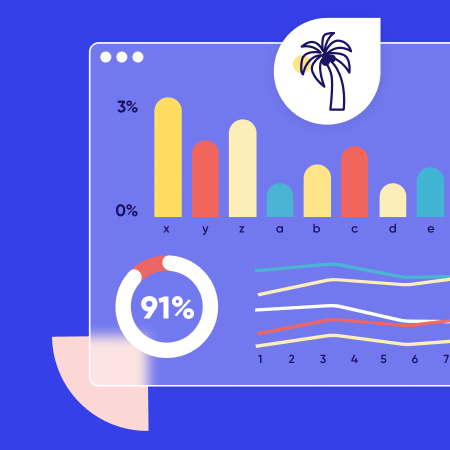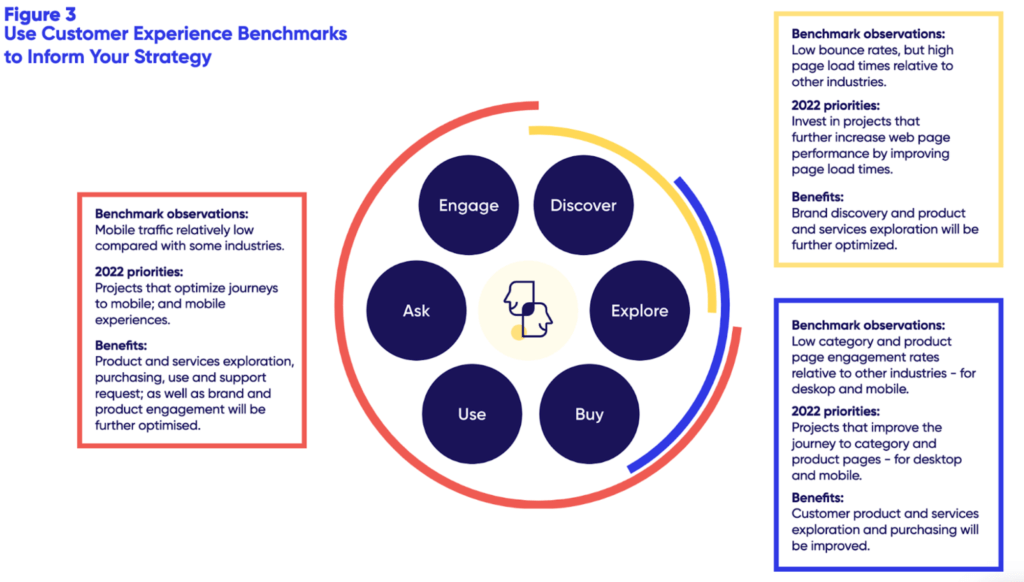
The Unknown Traveler
Insights and advice from ex-Forrester Analyst and VP of Marketing at Contentsquare, James McCormick.

The travel industry has seen major disruptions in recent years, which means the traveler as we knew her three years ago is not the traveler we see today. This “unknown traveler” concept was the focal point of a recent discussion between Contentsquare’s VP of Marketing (and ex-Forrester analyst) James McCormick and Chief Commercial Officer at glh Hotels, Jonathon Liu.
They focused their discussion on answering the following seven questions:
Coming up are seven fresh insights into how glh Hotels are transforming their business to cater to a brand new breed of post-pandemic travelers with the help of Contentsquare.
“Traditionally, I think hotels concentrated on the in-person customer experience from arrival to checkout,” says Jon. “But more and more, it’s about helping customers through the discovery phase now, too. We’re blurring the lines between the on-site experience and the pre-arrival, online experience.”
“Getting the entire experience right is important because people now look at the whole customer journey to judge their experience with your brand—not just the period they’re staying at the hotel.” — Jon Liu, Chief Commercial Officer at glh Hotels
Today’s consumer has more choices than ever before. “To win today, brands must be traveler-obsessed,” adds James McCormick, VP of Marketing at Contentsquare. “They need to understand exactly what the customer wants wherever she happens to be across her entire experience with the brand—whether searching for new services, booking accommodation or taking a flight.” This makes an in-depth understanding of digital customer behavior a key priority for all T&H brands who want to succeed in a post-pandemic world.
The Unknown Traveler Insights and advice from ex-Forrester Analyst and VP of Marketing at Contentsquare, James McCormick.
For glh Hotels, a great customer experience is seamless and personalized. “A seamless experience means ensuring customers can land on our website and find what they need without any effort. This helps drive conversion by building positive engagement with our customers,” says Jon.
“We also try to personalize the guest experience by adjusting a welcome gift or selecting a particular room type based on customer preference. For example, if I know a customer is traveling with family, how I can I give them a family-orientated experience rather than a luxury suite stay? It’s about personalizing their in-person experience based on their online behaviors,” he explains.
Furthermore, Jon often sees people booking hotel stays months in advance. But from studying advanced customer behavior, he noticed many people returned to the website multiple times after booking. “They return to our site and go to our blogs to look for more inspiration about the location they’re traveling to so they can get excited about their trip,” says Jon. “Proving that it’s not just about the hotel itself anymore; it’s about the entire experience.”
Contentsquare believes a great customer experience has three key qualities: inclusivity, accessibility and innovation. Inclusivity means covering the entire lifecycle of customer engagement beyond just the marketing and eCommerce funnel. Accessibility means ensuring those with accessibility needs (such as dyslexia, partial blindness or hearing problems) can access and use the website. And thirdly, innovation. “You need to offer an experience that improves upon what’s gone before,” says James. “You must offer new, innovative technologies—mobile check-in, contactless payments, voice control and biometrics, for example.”
“A great customer experience is human; which means it’s inclusive, accessible and innovative.” — James McCormick, VP of Marketing at Contentsquare
“A lot of things have accelerated very, very fast,” says Jon. “To use a personal example, my grandmother used to go to the shops to buy her groceries, but now buying online from the supermarket is normal for her—you wouldn’t have seen that two years ago! Similarly, our customers have moved online to explore and make transactions, whereas before a lot of our business came through call centers and via email.”
Customer behavior has changed during the in-person experience, too. “Even when you go into a restaurant these days, you often order directly from your phone. Customer trends have moved in a very different direction, which we’re trying to embrace as it’s clearly what people want!” says Jon.
For James, travel and hospitality (T&H) executives struggle to know this emerging post-pandemic traveler because of three key reasons:
For glh Hotels, one key travel trend is using advanced customer data to optimize user experiences and make informed business decisions. To do this, they recently rebuilt the commercial tech stack behind their meetings, events, rooms, and food and beverage elements to better understand their business. “Being an international business before COVID, and then transitioning to one that was 95% domestic was a massive change for us. We simply didn’t have the depth of knowledge and insights we needed as customer behaviors changed. So ensuring we were measuring all of these business metrics was very important,” says Jon.
This lack of insight into customer behavior is commonplace in the travel industry. “Only 38% of travel and hospitality leaders have a mature strategy for leveraging data and analytics to make better decisions,” says James.
And while glh Hotels may find themselves in that mature 38%, the overall average for travel is still low compared to other industries (retail and financial services saw 55% of brands with a mature strategy in place, for example). “This means the travel and hospitality sector has a huge strategic opportunity to grow in terms of maturity,” says James.
“Research also found that 90% of travel and hospitality firms cut back on data and analytics systems at the beginning of the pandemic to survive. This relatively low maturity coupled with under-investment in key analytics tools has created a big problem. Especially when it’s often T&H brands who need to move the quickest to reduce costs while increasing value for the traveler.”
“Travel and hospitality brands are rushing to transform to keep up with their ever-evolving travel customers, but they’re often doing it blindly.” — James McCormick, VP of Marketing at Contentsquare.
”At glh Hotels, we’re trying to understand which behaviors are a reflection of ‘revenge’ traveling and which are going to stick and become long-term behaviors we need to focus on,” says Jon. “So we’re working hard to identify those areas and ensure we remain relevant now that our customers have so much choice. Advanced customer insights from Contentsquare help us ensure we keep that relevancy and remain top of mind.”
James highlights three clear post-pandemic travel trends in the T&H space in digital transformation: apps, customer-facing services and contactless services:
2022 Travel Digital Experience Benchmark Report Get insights to deliver better, more human digital experiences.
For glh Hotels, DXA is the guiding force behind all business decisions. “Without it, we’re not well informed about our customers who are at the heart of everything we do,” says Jon. “This means we need to know not just how they’re responding and what they need, but also anticipate the next steps needed to keep surprising and delighting them.”
“It’s about delivering flawless comfort to customers through thoughtful experiences, but we need the right customer insights. We know behaviors are changing, and we know today’s customer wants that little bit more. So DXA gives us the insight we need to deliver the right experience to our customers.” — Jon Liu, Chief Commercial Officer at glh Hotels
“Digital experience analytics have evolved quickly over the last couple of years to bring together high-fidelity behavioral data that simply didn’t exist in the past,” adds James. With a next-generation digital experience platform like Contentsquare, brands can create digital empathy, start to see the human behind the clicks and conversions, and deliver experience-driven digital transformation. A game changer for the travel and hospitality industry.
“It’s going to differ from company to company,” says Jon. “But using advanced behavioral analytics to understand exactly what and where the opportunities are is really important. At glh Hotels, there are two things we’re prioritizing as we move into 2023. The first is building seamless journeys; getting the customer to the right product at the right time as quickly as possible. Secondly, it’s about bridging the gap between when they make the initial transaction and when they actually stay with us.”
Jon and his team are prioritizing creating content that helps to build engagement for travelers between those two key touchpoints, using blogs to build excitement around everything from dining opportunities to local attractions after travelers have booked their stay.
James adds further insight based on findings from Contentsquare’s 2022 Travel Benchmark Report. Brands should:

To find out more about how Contentsquare can help your travel and hospitality business, book a demo with us today. One of our travel experts would be delighted to show you how digital experience analytics can help you delight and entice your travel customers. We’re just a demo away.

The Unknown Traveler
Insights and advice from ex-Forrester Analyst and VP of Marketing at Contentsquare, James McCormick.